| 15 November |
• yesterday • tomorrow |
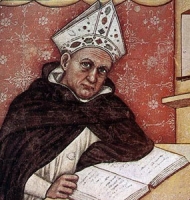
• Albert of Lauingen
• Albertus Magnus
• Doctor Expertus
• Doctor Universalis
Son of a military nobleman. Dominican. Priest. Taught theology at Cologne, Germany, and Paris, France. Teacher of Saint Thomas Aquinas. Influential teacher, preacher, and administrator. Bishop of Regensburg, Germany. Introduced Greek and Arabic science and philosophy to medieval Europe. Known for his wide interest in what became known later as the natural sciences - botany, biology, etc. Wrote and illustrated guides to his observations, and was considered on a par with Aristotle as an authority on these matters. Theological writer. Doctor of the Church.
1206 at Lauingen an der Donau, Swabia (part of modern Germany)
15 November 1280 at Cologne, Prussia (part of modern Germany) of natural causes
1622 by Pope Gregory XV
1931 by Pope Pius XI
• Cincinnati, Ohio, archdiocese of
• medical technicians
• natural sciences
• philosophers
• schoolchildren, students
• scientists (proclaimed on 13 August 1948 by Pope Pius XII)
• theology students
• man dressed as a Dominican bishop lecturing from a pulpit
• man arguing with Saint Thomas Aquinas
Dear Scientist and Doctor of the Church, natural science always led you to the higher science of God. Though you had an encyclopedic knowledge, it never made you proud, for you regarded it as a gift of God. Inspire scientists to use their gifts well in studying the wonders of creation, thus bettering the lot of the human race and rendering greater glory to God. Amen.
It is by the path of love, which is charity, that God draws near to man, and man to God. But where charity is not found, God cannot dwell. If, then, we possess charity, we possess God, for "God is Charity" (1 John 4:8) - Saint Albert the Great
"Do this in remembrance of me." Two things should be noted here. The first is the command that we should use this sacrament, which is indicated when Jesus says, "Do this." The second is that this sacrament commemorates the Lord's going to death for our sake. This sacrament is profitable because it grants remission of sins; it is most useful because it bestows the fullness of grace on us in this life. "The Father of spirits instructs us in what is useful for our sanctification." And his sanctification is in Christ's sacrifice, that is, when he offers himself in this sacrament to the Father for our redemption to us for our use. Christ could not have commanded anything more beneficial, for this sacrament is the fruit of the tree of life. Anyone who receives this sacrament with the devotion of sincere faith will never taste death. "It is a tree of life for those who grasp it, and blessed is he who holds it fast. The man who feeds on me shall live on account of me." Nor could he have commanded anything more lovable, for this sacrament produces love and union. It is characteristic of the greatest love to give itself as food. "Had not the men of my text exclaimed: Who will feed us with his flesh to satisfy our hunger? as if to say: I have loved them and they have loved me so much that I desire to be within them, and they wish to receive me so that they may become my members. There is no more intimate or more natural means for them to be united to me, and I to them. Nor could he have commanded anything which is more like eternal life. Eternal life flows from this sacrament because God with all sweetness pours himself out upon the blessed. - from a commentary by Saint Albert the Great on the Gospel of Luke
https://catholicsaints.info/saint-albert-the-great/
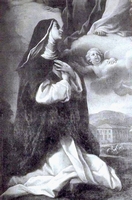
• Lucy Brocolelli
• Lucy de Alessio
• Lucia Broccadelli
The eldest of eleven children of Bartolomeo Broccadelli and Gentilina Cassio. A pious child, at age five she received a vision of Our Lady, and at age seven she saw Mary and received a scapular from Saint Dominic de Guzman. By age twelve she had taken private vows and had decided to become a Dominican. However, her father died, she was placed in the care of her uncle, and at age 15 she was betrothed in an arranged marriage to Count Pietro de Alessio of Milan, Italy. Her fondness for Pietro and her duty to her family conflicted with her desire for the religious life, and the stress caused her to become ill until she received a vision of Mary, Saint Dominic and Saint Catherine. She finally married the count, but he understood that they would live as brother and sister.
Lucy took over the operation of the count's household. She taught catechism to the servants, began caring for the local poor, and spent her evenings in prayer. The servants claimed that Saint Catherine, Saint Agnes of Rome and Saint Agnes of Montepulciano helped her bake bread for the poor. At one point Lucy simply walked away from home, planning to become an anchorite; she claimed that Saint Dominic brought her back as she had other things to do; her husband had her locked up, possibly for what he considered her own safety. This became the breaking point for them; a few weeks later Lucy returned to her mother's home. Pietro eventually became a Franciscan and noted preacher.
In 1496 she moved to Viterbo, Italy, and joined a group of Dominican tertiaries. Her visions continued, she began to fall into ecstasies during prayer, and received the signs of the stigmata. Word of her visions and actions got around, and curiosity seekers came to gawk at her. Her bishop investigated her himself, but did not come to any conclusion about the nature of her visions, and referred her to the Inquisition. They investigated, reached no decision, and referred her to the Vatican. The Pope, with the help of Blessed Columba of Rieti, decided that the mystical signs were of God, and asked Lucy to pray for him.
Lucy returned to Viterbo where the locals were excited to have her back. However, the count of Ferrara, Italy who had just built a convent of Saint Catherine of Siena in Narni, Italy, asked Lucy to serve as its prioress; she agreed, with the plan to make it a house of very strict observance. This triggered a two-year conflict between the two cities which actually led to armed conflict when the count sent troops to Viterbo in 1499 to escort her to the convent. There she ran into additional problems as many novices were unable to live under the strict rules; there was sometimes a circus atmosphere at the house as the count brought visitors to show off Lucy, and would demand that she show signs of stigmata. In 1505 the Dominicans replaced her as prioress, and the new superior had her confined; for her remaining 39 years she lived in silence, speaking only to her confessor, completely obedient, never complaining, utterly forgotten by the outside world, and spending all free time in prayer, frequently going into ecstasies and receiving visions.
13 December 1476 in Narni, Umbria, Italy as Lucy Brocolelli
• 15 November 1544 at the Saint Catherine of Siena convent in Ferrara, Italy of natural causes
• miracles were reported at her tomb, people began to visit her grave to pray, and she was re-interred twice to make it easier for them
• interred in the cathedral in Ferrara
• body incorrupt
1 March 1710 (cultus confirmed) by Pope Clement XI
https://catholicsaints.info/blessed-lucy-of-narni/
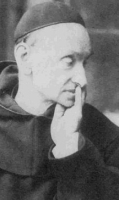
• Joseph Kalinowski
• Raffael di San Giuseppe
• Raphael Joseph Kalinowski
• Raphael of Saint Joseph
Son of Andrew Kalinowski, prominent mathmatics professor at the College of Nobility, and Josepha Poionska Kalinowski. Studied at his father's school. Though he felt a call to the priesthood, Joseph decided on college first. He studied zoology, chemistry, agriculture, and apiculture at the Institute of Agronomy in Hory Horki, Russia, and at the Academy of Military Engineering at Saint Petersburg, Russia.
Lieutenant in the Russian Military Engineering Corps in 1857. Planned and supervised the construction of the railway between Kursk and Odessa. Promoted to captain in 1862, he was stationed in Brest-Litovsk. There he started, taught, and bore all the costs of a Sunday school, accepting anyone interested.
In 1863 he supported the Polish insurrection. He resigned from the Russian army and became the rebellion's minister of war for the Vilna region; he took the commission with the understanding that he would never hand out a death sentence or execute a prisoner. Arrested by Russian authorities on 25 March 1864. In June 1864 he was condemned to death for his part in the revolt, but the authorities feared they would be creating a political martyr, and commuted his sentence to ten years forced labour in the Siberian salt mines; part of his sentence was spent in Irkutsk where his relics recently sanctified a new cathedral.
Released in 1873, he was exiled from his home region in Lithuania. Moved to Paris, France, and worked as a tutor for three years. In 1877 he finally answered the long-heard call to the religious life, and joined the Carmelite Order at Graz, Austria, taking the name Raphael. Studied theology in Hungary, then joined the Carmelite house at Czama, Poland. Ordained on 15 January 1882.
Worked to restore the Discalced Carmelites to Poland, and for church unity. Founded a convent at Wadowice, Poland, c.1889. Worked with Blessed Alphonsus Mary Marurek. Noted spiritural director of both Catholics and Orthodox. Enthusiastic parish priest, he spent countless hours with his parishioners in the confessional.
1 September 1835 at Vilna, Russian Poland (modern Vilnius, Lithuania) as Joseph Kalinowski
15 November 1907 at Wadowice, Malopolskie, Poland of natural causes
17 November 1991 by Pope John Paul II
Our Redeemer, ever present in the most Blessed Sacrament, extends His hand to everyone. He opens His heart and says, 'Come to Me, all of You.'" - Saint Raphael
https://catholicsaints.info/saint-raphael-kalinowski/
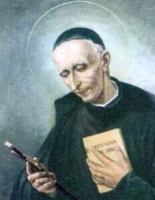
• Giuseppe Maria Pignatelli
• José Pignatelli Moncayo
14 November (Jesuits)
His mother was Spanish, his father an Italian noble. An orphan at age 9, he became a resident student at the Jesuit college in Zaragoza. Joined the Jesuits in 1753 at Taragona at age 16, along with his brother. Developed tuberculosis, which weakened and haunted him the rest of his life. Ordained in 1763 at age 25. Teacher at Manresa, Bilboa, and Zaragoza. Ministered to men on death row.
Expelled with other Jesuits on 3 April 1767 by order of King Charles III. Being a member of the nobility, Joseph had a chance to stay, but he left with his exiled brothers. On the road they found that the Jesuits were being expelled from all countries except Prussia and Russia. Joseph stubbornly kept together a remnant of the order, and these would the restoration of the Jesuits three years after Joseph's death. Led and inspired the Jesuits during the 41 years of the Suppression of the Society. Considered the link between the old Jesuits, suppressed in 1773, and the new Jesuits, restored in 1814.
Groups of Jesuits reformed into societies such as The Society of the Sacred Heart of Jesus in France and The Society of the Faith of Jesus in Italy. The Jesuits survived in Russia, and though he lived in Italy, Joseph associated himself with them. In 1775, Pope Pius VI gave permission for Jesuits from other countries to rejoin the Jesuits in Russia, and in 1799 approved the opening of a novitiate in Colorno, Italy, making Joseph the Master of Novices. In 1801 King Charles Emmanuel IV of Sardinia reinstated the Jesuits in his kingdom, and in 1815 he joined them himself.
In 1800 Pope Pius VII determined to completely restore the Society, but was unable until the fall of Napoleon. Despite their being virtually nothing left of the Society's resources, requests for the restored Jesuits to start schools poured in from every direction. Within a year the Society had as many members and as many foundations as the old Society had had in 1555.
27 December 1737 at Zaragoza, Spain
15 November 1811 in Rome, Italy of his life long fight with tuberculosis
12 June 1954 by Pope Pius XII
https://catholicsaints.info/saint-joseph-pignatelli/
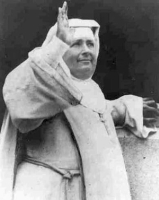
• Marie of the Passion
• Marie de la Passion de Chappotin
The death of two sisters and a cousin led Hélène to look for meaning in life, which led to her discerning a call to religious life. Her mother died when Hélène was 20 years old, and she put the religious life on hold to run her family home and help raise her younger siblings. In December 1860, having a great devotion to Saint Francis of Assisi, she was finally able to follow the call and joined the Poor Clares, but health problems forced her to return home. When she recovered, her confessor directed her to the Society of Marie Reparatrice which she joined in 1864, making her profession in Toulouse, France on 15 August 1865, taking the name Mary of the Passion. Missionary to India in March 1865. Provincial superior of three Reparatrice houses in July 1867. In the mid-1870's, she became embroiled in disputes among missionary houses in India which led to going to the Vatican to seek help settling the issue. On 6 January 1877 she obtained permission from Pope Pius IX to found the Franciscan Missionaries of Mary. Worked with Servant of God Father Bernardin de Portogruaro. Due to internal politics and dissension, she was removed from her position as superior of the Order in March 1883; an inquiry by Pope Leo XIII cleared her of all allegations and she was re-elected to the position of Superior in July 1884. Today the Missionaries continue their good work with 2,000 sisters at 86 houses on four continents.
21 May 1839 in Nantes, Loire-Atlantique, France
• 15 November 1904 in San Remo, Imperia, Italy of natural causes
• interred in a private oratory at the general house of the Franciscan Missionaries of Mary in Rome, Italy
• 20 October 2002 by Pope John Paul II
• her beatification miracle involving the healing of a religious sister who suffered from "pulmonary and vertebral TBC, Pott's Disease"
https://catholicsaints.info/blessed-helene-marie-philippine-de-chappotin-de-neuville/

• Roch Gonzalez
• Roque Gonzalez
Born to the Paraguayan nobility. Jesuit priest. One of the architects of the Jesuit Reductions in Paraguay. Realizing the damage of the slave trade, the Jesuits gathered the indigenous Indians and went inland. In Paraguay, beginning in 1609, they built settlements, taught agriculture, architecture, construction, metallurgy, farming, ranching and printing. By the time the Jesuits were expelled in 1767 they had 57 settlements with over 100,000 native residents.
Roch served as doctor, engineer, architect, farmer and pastor, supervised the construction of churches, schools and homes, and introduced care for cattle and sheep to the natives. He adapted his tactics to the locals love of ornament, dancing, and noise. On the great feasts of the Church, Roch solemnly celebrated Mass outside the little thatched church, and then the whole village dressed in their best and celebrated the rest of the day with games, bonfires, religious dances, flute music, and fireworks. Fierce warriors were softened by Roch's gentle Christianity, put aside their hatred for religion, and embraced the faith; violent revenge, previously part of the local culture, was abandoned.
This progress recevied a severe blow by the arrival of slave traders who were able to influence the Spanish crown and get permission for their activity. They lured natives away from the Reductions, betrayed them, and sold them into slavery. Roch became a stanch protector of their freedom, pleading the Indian cause so forcefully with the Spanish government that the Reduction of Saint Ignatius was finally left in peace.
Because of his success in evangelizing the natives, a local witch-doctor who was losing his power base murdered Roch along with Saint John de Castillo and Saint Alphonsus Rodriquez. One of the Jesuit Martyrs of Paraguay.
1576 at Asunción, Paraguay
martyred on 15 November 1628 at Caaro, Brazil, just as he finished celebrating Mass
16 May 1988 by Pope John Paul II
native traditions
https://catholicsaints.info/saint-rocco-gonzalez/
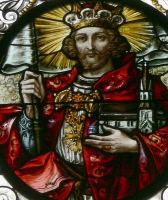
• Leopold the Good
• Leopold the Pious
• Leopold the Valiant
• Leopold of Austria
• Leopold the Saint
Grandson of Emperor Henry III. Grandfather of Frederick Barbarossa. Educated by bishop Altman of Passau, Germany. At age 23 he succeeded his father as margrave (military governor) of Austria. Married to Agnes, widowed daughter of Emperor Henry IV. She brought two children into the marriage, and they had eighteenof their own, eleven of whom survived. Father of Otto of Freising, who wrote Leopold's biography, and of Duke Henry II of Austria, and step-father to King Conrad III of Germany. Founded Benedictine, Cistercian and Augustinian houses in 1106, and others later in life; houses in Heiligenkreuz, Klosterneuburg, and Mariazell still exist. Defeated the Hungarians to defend his homeland. Arranged the Concordat of Worms in 1122, an agreement that ended the battle over royal versus ecclesiastical investiture. Refused the throne of the Holy Roman Emperor in 1125. Active in support of the First Crusade.
1073 at Melk, Lower Austria, Austria
1136 at the abbey of Klosternburg, Niederosterrich, Austria of natural causes
6 January 1485 by Pope Innocent VIII
• against the death of children
• large families
• Lower Austria
• step-parents
• Austria (since 1663; proclaimed on 17 December 1913 by Pope Pius X)
• Upper Austria
• Abetone, Italy
• armed man with a cross on his coronet, a banner with three eagles, and a model of the church of Heiligenkreuz in his hand
• man before the Blessed Virgin Mary and Saint Anne
• man hunting with his courtiers, and finding his wife's veil near the monastery of Klosterneuburg
• with Saint Jerome
• with his building Klosterneuburg
• with the Blessed Virgin Mary appearing to him while he hunts, and with a veil nearby
https://catholicsaints.info/saint-leopold-iii/
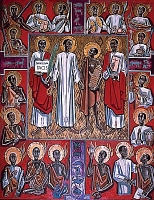
• Josef Mukasa
• Joseph Balikuddembe
• Joseph Mkasa Balikuddembe
• Joseph Mkasa
• Yosefu Mkasa
• Yosefu Mukasa Balikuddembe
3 June as one of the Martyrs of Uganda
Kayozi clan. Major-domo to King Mwanga of Uganda, and captain of the king's pages. Convert, joining on 15 November 1885. Rebuked the 18 year old king for his dissolute lifestyle, his drinking, his advances to the male court pages, and the martyrdom of Anglican missionary bishop James Hannington. Not the first Christian killed in Uganda, but the first Catholic martyr in the country. One of the Martyrs of Uganda who died in the Mwangan persecutions.
1860 at Buganda, Uganda
• beheaded on 15 November 1885 at Nakivubo, Uganda
• his body was burned
18 October 1964 by Pope Paul VI at Rome, Italy
https://catholicsaints.info/saint-joseph-mukasa/
Former fellow of the two Saint Mary Winton colleges. Priest. First holder of the Wykehamical prebend "Bursalis" at the Chichester Cathedral. Obtained a dispensation from residence, and was living as a Benedictine monk at Reading, Berkshire, England in 1532. Believed to have hidden the hand of Saint Anastasius, a relic housed in the cathedral, when the king's men seized the relics in the Reading abbey, and which was rediscovered during renovations in 1786. For this, and for denying the king's as head of the Church, he was executed. Martyr.
English
• dragged through the streets, hanged, drawn, and quartered on 15 November 1539 at the main abbey gateway in Reading, Berkshire, England
• body left to rot in his chains as a warning for others
• body removed by locals and buried first at Bere Court
• relics re-interred in the 16th century
13 May 1895 by Pope Leo XIII
https://catholicsaints.info/blessed-john-rugg/
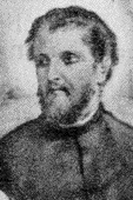
• Alphonsus Rodriquez
• Alphonso Rodriquez
Jesuit, ordained in 1624. Missionary to Paraguay and Brazil. With Saint Rocco Gonzalez and Saint Juan de Castillo, he co-founded the "reduction" of the Assumption on the Ijuhi River. In 1628 they established the All Saints mission in Caaro, Brazil. Killed 15 days into his missionary work. One of the Jesuit Martyrs of Paraguay, the first martyrs in the Americas to be beatified.
14 September 1595 in Belmonte, Cuenca, Spain
hacked to death with a hatchet on 15 November 1628 at Caaro, Brazil
16 May 1988 by Pope John Paul II
native traditions
https://catholicsaints.info/saint-alonso-rodriguez-15-november/
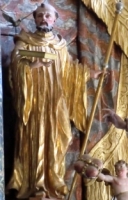
Findanus, Fintan
Captured by Norse raiders, who murdered the rest of his family, Findan was forced into slavery in the Orkney Islands. He escaped to Scotland and headed south, becoming a pilgrim to Rome, Italy. Monk at Farfa Abbey, Farfa Sabina, Italy. Monk and hermit in Rheinau Abbey, Rheinau, Switzerland for 22 years, living his last 17 years as a walled-in recluse.
Leinster, Ireland
• 879 at the Rheinau Abbey, Rheinau, Switzerland of natural causes
• relics enshrined in the Fintansaltar in the abbey church
1114 by Pope Paschal II (cultus confirmation)
• dove
• pilgrim's staff
https://catholicsaints.info/saint-findan/
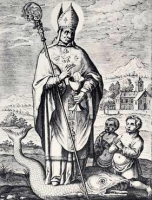
• Malo of Brittany
• Mac'h Low, Machutus, Maclou, Maclovio, Maclovius, Macuto
An adult convert who was baptized by and became the spiritual student of Saint Brendan the Navigator. Monk at Llancarfan Abbey in Wales. One of the monks on the famous Voyage of Saint Brendan. Immigrant to Brittany where he helped in the missionary work of Saint Aaron of Brettany. First bishop of Aleth (modern Saint-Servan, France). Established churches in the area of Brittany now named Saint-Malo in his honour. Driven from the area to Saintes, France by opponents to his mission.
c.520 in Wales
15 November c.620 at Archingeay, France
https://catholicsaints.info/saint-malo-of-aleth/

• Hugh Cook
• Hugh Farrington
Abbot in Reading, England in 1520. Royal chaplain, member of Parliament, and close friend of King Henry VIII. When Henry split with Rome and ordered the dissolution of religious houses, Hugh refused to surrender his abbey. He was convicted of treason, and martyred.
in Faringdon, Berkshire, England as Hugh Cook
15 November 1539 in Reading, Berkshire, England
13 May 1895 by Pope Leo XIII (cultus confirmation)
https://catholicsaints.info/blessed-hugh-faringdon/
Benedictine monk at Glastonbury Abbey. Educated at Cambridge. Ordained in 1501. Abbot of Glastonbury in 1525. Leader of his house when King Henry VIII seized Church property as part of his usurpation of religious power. Arrested for refusing to turn his abbey over to the king's men. Convicted of treason for remaining loyal to Rome. Martyr.
Wrington, Somerset, England
hanged, drawn, and quartered on 1 December 1539 at Tor Hill, Glastonbury, England
13 May 1895 by Pope Leo XIII
https://catholicsaints.info/blessed-richard-whiting/
Monk at Jumièges Abbey in France in 664. Spiritual student of Saint Philibert. Spent several years travelling from monastery to monastery. Companion to Saint Ouen of Rouen in Rome, Italy for more than ten years. Sent by Ouen to found a monastery near the city of Rouen; it was known as Saint-Saëns, France and was destroyed in the 9th century by war. Sidonius founded several other monasteries in this region, and served as abbot, before retiring to live as a simple monk. Spiritual teacher of Saint Leutfridus.
7th century Ireland
c.684 of natural causes
https://catholicsaints.info/saint-sidonius-of-saint-saens/
Benedictine monk at Glastonbury. Abbey treasurer at the time the house was dissolved by decree of King Henry VIII. When the king's men arrived to disperse the monks and impound the treasury, John hid it. For keeping Church property from the king, he was charged with sacrilege and treason. Tortured and executed. Martyr.
dragged through the streets by horses then hanged, drawn, and quartered on 15 November 1539 at Tor Hill, Glastonbury, Somerset, England
13 May 1895 by Pope Leo XIII
https://catholicsaints.info/blessed-john-thorne/
Didier
Born to the Gallo-Roman nobility, the son of Salvius and Herchenfreda; brother of Saint Rusticus. Educated in the court of King Clotaire II. Studied canon law. Royal treasurer to Clotaire II and Dagobert I. Bishop of Cahors, France from 630 to 655. Great supporter of monastic life for both men and women in his diocese, and of church construction.
c.580 in Albi, France
655 of natural causes
https://catholicsaints.info/saint-desiderius-of-cahors/
Sub-treasurer of, sacristan for and the youngest Benedictine monk in Glastonbury Abbey. Arrested for refusing to acknowledge King Henry VIII as head of the Church. Martyr.
England
dragged through the streets by horses then hanged, drawn, and quartered on 15 November 1539 at Tor Hill, Glastonbury, Somerset, England
13 May 1895 by Pope Leo XIII
https://catholicsaints.info/blessed-roger-james/
John Oynon
Benedictine monk. Priest at Saint Giles, Reading, England. He refused to surrender his parish to non-Catholic authorities, was arrested, and executed. Martyr.
English
hanged on 15 November 1539 at the entrance of the abbey in Reading, Berkshire, England
13 May 1895 by Pope Leo XIII (cultus confirmation)
https://catholicsaints.info/blessed-john-eynon/
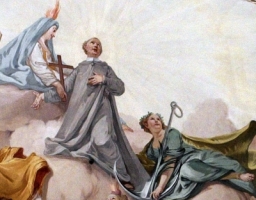
• Anianus of Irschenberg
• Aniano
Nephew of Saint Anianus of Wilparting. Travelling missionary deacon. Martyr.
697 at Mount Irschenberg, Bavaria, Germany
https://catholicsaints.info/saint-anianus-of-wilparting/

• Marianus of Irschenberg
• Mariano
Uncle of Anianus of Wilparting. Travelling missionary bishop. Martyr.
697 at Mount Irschenberg, Bavaria, Germany
https://catholicsaints.info/saints-marinus-of-wilparting/
Caio
Layman catechist in the archdiocese of Nagasaki, Japan. Martyr. Caius was accepted into the Jesuits, but had been executed before the notice reached him.
1571 in Korea
burned alive on 15 November 1624 in Nagasaki, Japan
7 May 1867 by Pope Pius IX
https://catholicsaints.info/blessed-caius-of-korea/
Priest in the diocese of Albacete, Spain. Martyred in the Spanish Civil War.
30 July 1879 in Caudete, Orihuela, Spain
15 November 1936 in Almansa, Albacete, Spain
28 October 2007 by Pope Benedict XVI
https://catholicsaints.info/blessed-miguel-diaz-sanchez/

Guria, Gury
Martyred in the persecutions of Diocletian.
Sarcigitua
beheaded in 305 at Edessa, Syria
https://catholicsaints.info/saint-gurias-of-edessa/

Samonas
Martyred in the persecutions of Diocletian.
Ganas
beheaded in 305 at Edessa, Syria
https://catholicsaints.info/saint-shamuna-of-edessa/
Missionary to Switzerland and Germany. Noted for the depth of his prayer life. In later life he retired to live as a hermit on an island in the Rhine River.
Ireland
827 of natural causes
https://catholicsaints.info/saint-fintan-the-missionary/
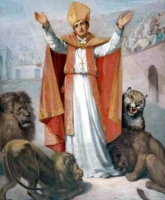
Bishop of Nola, Italy. Martyred with 30 other Christians in the 3rd-century persecutions of the prefect Marcianus.
https://catholicsaints.info/saint-felix-of-nola-15-november/
Asso, Hassi, Hasso, Hassus
Franciscan friar known for the holiness of his life and as a miracle worker.
• c.1250
• buried in the Franciscan church at Torgau, Germany
https://catholicsaints.info/blessed-assone-of-torgau/
Eugenius
Third century missionary who worked with Saint Dionysius of Paris. Martyr.
relics translated to Toledo, Spain in 1148
https://catholicsaints.info/saint-eugene-of-toledo/
Pavin of Le Mans
Monk at Saint Vincent Abbey, Le Mans, France. First abbot of Saint Mary's Abbey, Le Mans.
c.703
https://catholicsaints.info/saint-paduinus-of-le-mans/
Machell, Mechell
Founded Llanfechell Abbey, Anglesey, Wales, and served as its first abbot.
7th century
https://catholicsaints.info/saint-machudd-of-llanfechel/
Bishop of Toul, France from 847 to 871. Opposed the divorce of King Lothair II.
871
https://catholicsaints.info/saint-arnulf-of-toul/
Bishop of Verona, Italy.
https://catholicsaints.info/saint-luperius-of-verona/
20 Christians martyred together and celebrated by Saint Augustine. The only details about them to survive are three of the names - Fidenziano, Valerian and Victoria.
Hippo, Numidia (in north Africa)
https://catholicsaints.info/martyrs-of-hippo/
A group of Christians murdered for their faith in imperial Roman north Africa. The only details that have survived are the names of three of them - Fidentian, Secundus and Varicus.
https://catholicsaints.info/martyrs-of-north-africa-15-november/
CatholicSaints.Info Portable Edition